How often should I clean a mattress?

While we all roughly know how often things like clothes need to be cleaned, a mattress is a bit more tricky to figure out. In fact, there's a good chance that some of you have been putting this task off for way longer than you'd care to admit!
So, let's get down to it – as a general rule of thumb, you should clean your mattress twice a year. However, there are a few important notes when it comes to this number. For example, you should probably clean your mattress more frequently if you:
Have a pet
Regardless of how much we love our pets, there's no denying the fact that having a dog or cat in the same bed as you leads to a quicker accumulation of hair. Not to mention that if there are not potty trained, sweat stains will be the least of your worries.
And if you also have a backyard where your furballs like to play before coming into the house, we suggest cleaning your mattress at least every 3 months. After all, your pets deserve a bed with no mildew and germs just as much as you do!
Share the bed
If you share the bed with a partner, a toddler, or both, cleaning your mattress more frequently should be on your to-do list. For one, more bodies equal more bodily fluids, more dead skin, more sweat stains, and if your toddler isn't potty trained – more urine stains.
Not to mention that keeping things clean is extremely important if a toddler's going to be sleeping in that bed since their immune system might not be as rugged as yours or your partner's. So, better be safe than sorry.
Like to eat in bed
Although having breakfast in bed makes you feel like royalty, it can cause some issues. For one, you could end up with all kinds of bugs coming for the crumb buffet. Secondly, crumbs, dirt, and dead skin cells can even make your mattress lose some of its grip, leading to a slippery mattress that can rob you of a good night's sleep.
So, ideally, you'd want to clean up after every meal in bed, at least lightly. If not that, then at least once every 3-4 months. Or sooner, if you happen to spot some bugs hanging out in the area.
Step 1: Preparations
Now that you know whether the mattress needs to be cleaned, let's get things set up and actually start cleaning! So, the first thing you'd want to do is to take care of all adjacent steps. These include but are not limited to:
Washing all the bedding products you have
Before getting to the mattress itself, take off and wash the sheets, the pillowcases, the duvet covers and any other bedding product you might use (like weighted blankets, mattress toppers or any other bed linen). After all, this is what your skin comes into direct contact with so keeping it clean is a must!
We generally recommend washing sheets weekly, so, odds are they're itching for a clean. Plus, if you clean all the bedding at once, you get to experience that nice, fresh sleep once you're finished with the mattress.
Step 1: Let some air in

While cleaning your mattress, there's bound to be a lot of dust in the air and if you're using stronger solutions to remove mattress stains, there might be odours as well.
So, having all the windows open and letting fresh air in during the process is going to make the whole process a lot easier and save you from issues later on.
Generally, it's better to go overboard than to cut this step short. So, leave a few windows wide open for at least an hour or more. It's also useful to keep those windows open while you're cleaning the mattress.
Step 2: Vacuuming

Now that everything is prepped, it's time to get out the vacuum cleaner and start cleaning. Ideally, you'd want to use an upholstery attachment and go over the mattress from top to bottom. However, you can get the job done with no attachment as well, you just need to be a bit more careful.
Namely, if the mattress has foam, don't apply a lot of pressure but rather keep some clearance between the nozzle and the mattress. And if you have a mattress with a tufted design, make sure to vacuum all the little crevices.
Once you've gone over the entire mattress properly, it's time to flip it over. This might sound tedious but it's very important! As we briefly mentioned before, you need to remove dust mites and skin cells from underneath the mattress as well so that it doesn't start slipping during the night.
Just like with the top half, just go over the entire surface with the vacuum if you're doing regular mattress cleaning and there aren't any stains to take care of. However, if you want a deep clean, hold off on flipping the mattress for now, as there's more work to be done on the other side.
Step 3: Getting rid of odours

When it comes to getting rid of odours, there are three ways you can go about it but they all have one thing in common – baking soda. So, let's go over them quickly:
- Only use baking soda: if there aren't any major stains or issues with the mattress, just sprinkle baking soda atop the mattress. Let the baking soda sit for about an hour (but the longer the better) and then vacuum it all up. Since it's a natural deodoriser, it should get rid of any faint smells.
- Use baking soda plus lemon juice: If the odours are a bit stronger, adding some lemon juice to the baking soda can make it more potent. The mix should still be in powder form, however, so don't go overboard. And just like in the previous example, let it sit and then vacuum it up.
- Use a hydrogen peroxide 3% solution and baking soda: If the odours are very strong, this might be the way to go. It will also help to take a damp cloth and rub the mixture into the mattress so that it can penetrate and get in a deeper clean.
As a bonus tip, you can use a good essential oil that you like in small qualities in order to give the mattress an extra delightful smell.
Step 4: Getting rid of stains

When it comes to removing stains, it can get a bit complicated – especially if you don't act right away and the stain has had time to sink into the material. This is because, if left untreated, a stain can take hold and be a lot more stubborn when it comes to getting it out.
So, ideally, you should try to wash out a stain within minutes of it happening. But, if that's not possible, there are a few general guidelines you should follow.
So, let's talk about the different types of stains and what you can do in order to make them disappear.
How to get urine out of a mattress?
When you notice these stains, it is important to act as soon as possible. Use toilet paper to absorb liquid from the surface of the mattress and prevent the stain from spreading. Then, sprinkle baking soda that will pick up the remaining moisture and odours.
Stir the laundry detergent with baking soda and spray the stain with this solution. Leave the mattress in this state for 10 minutes and pick up the excess liquid with paper. Use baking soda again, but sprinkle it all over the mattress and leave it as long as possible. The next day, vacuum the remains from the mattress and take it out into the air or open the windows in the room.
This same method should generally help with sweat and vomit stains as well.
How to get blood out of a mattress

Blood stains are best removed from the mattress while they're still fresh. As this stain dries, the chances of keeping the mattress spotless plummet from hour to hour. To get rid of blood stains quickly, only use cold water, because the protein in the blood coagulates in hot water and it's almost impossible to get rid of stains after that point.
Even if you do manage to clean them up after that, there will be a yellowish trace that will not be able to be removed.
In addition to cold water, you need a stain remover in which you will soak a clean cloth. Apply the cleaning agent to the stain with a wet cloth and let it stand for a while, only then continue cleaning. If you are not sure whether a certain product will work on the stain, check the label carefully and/or do a test. Choose an inconspicuous place and try how the product works, so you will not destroy the mattress.
After that point, it's all about elbow grease and rubbing it down. Getting a spray bottle and sprinkling some more solution to the mattress or adding baking soda can also help things along.
How to get wine out of a mattress?

If you like to occasionally sip some wine in bed, knowing how to get rid of the wine stain that might come as a result can come in handy. First off, if the stain is fresh, put some salt onto the stain in order to absorb moisture and make things a bit easier.
From this point, make a solution of one part dish soap and two parts hydrogen peroxide. Take a clean cloth, dab it into the solution and then carefully clean the stain. Make sure not to rub but rather dab so that the stain lifts instead of penetrating deeper into the mattress.
Step 5: Airing it all out

As we've mentioned in the preparation phase, airing things out after the cleaning is done is essential. If possible, leave the mattress outside in direct sunlight with a mat underneath. If not, just open up all the windows and let it sit for at least a few hours.
You can also use this time to finish up cleaning the bed linen and wipe down the bed frame. Although it's not going to be nearly as dirty as the mattress, it's still useful to give it a wipe from time to time in order to keep everything fresh.
How to keep your mattress clean for longer?
Now that you know how to clean a mattress, you might want to avoid making it a monthly task. Luckily, there are a few things you can do in order to make cleaning it less frequently a viable strategy.
Get a mattress protector

Getting a good mattress protector can make your life easier in quite a few ways. For one, getting a waterproof mattress protector means that you can basically skip the entire “stains” section of this article.
Secondly, since there's a buffer between you and the brand new mattress itself, you're less likely to have bed bugs and the dirt will accumulate at a much slower rate. We still suggest cleaning the mattress properly from time to time and the mattress cover still needs to be taken care of, but things should be a lot easier overall.
And if you want to know more about mattress protectors – like what to look out for or which materials offer the best results, we suggest reading our top 8 mattress protector recommendation list.
Let your mattress air out every morning
Although this isn't as life-changing as getting a mattress protector, it can make dealing with odours a lot easier. All you have to do is take off the bed sheets after waking up and open up a window.
Letting the mattress air out in this manner will make it less likely for odours to stick around and will keep your mattress fresh for longer. Plus, if there does happen to be a stain, you're more likely to catch it early on and clean it up before it manages to spread.
Make your bed a sleep-only zone
Although it might be a buzzkill, enforcing strict rules when it comes to your bed can save you a lot of trouble. For example, making strict rules about eating, drinking, or smoking in bed is bound to make a difference in the long run.
And, if you have a pet, getting a luxury dog bed for them to sleep in instead of jumping in with you is going to make things a lot easier. Don't worry, the dog isn't going to suffer either, as having its own dog bed can make it quite happy in the long run!
How to clean a mattress topper or protector?
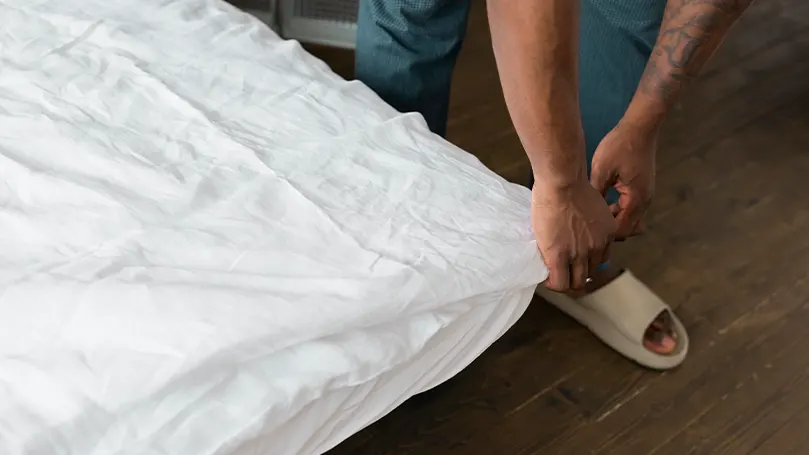
If you already have a mattress topper or protector, cleaning the mattress itself doesn't have to be as frequent. However, you still have to clean whatever's on top, so there's still some work to do.
When it comes to a mattress protector, things are usually quite easy. If it's waterproof, just take a damp cloth and give it a good rubdown. You can also use a cleaning solution if you want to be extra thorough. After all, protectors are usually quite sturdy and easy to maintain.
When it comes to mattress toppers, things are a lot more complicated. In fact, it can even be as taxing as cleaning the mattress itself. So, if you want a detailed guide on how to clean a mattress topper, go to our article on the topic.
How to clean a memory foam mattress?
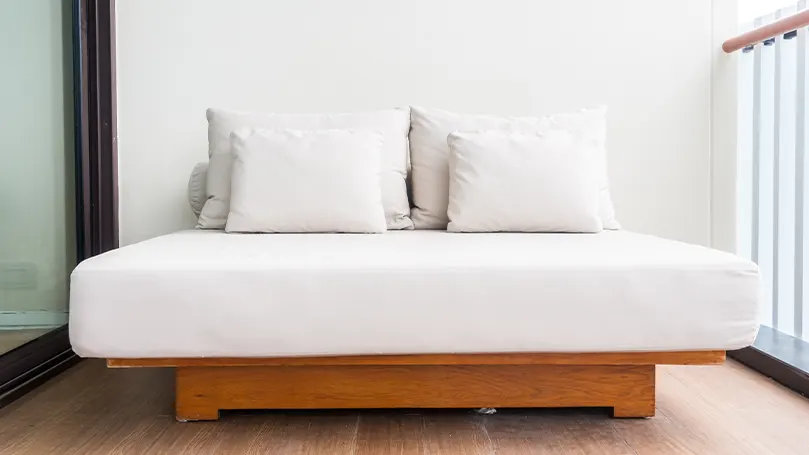
So, here are some general rules you need to follow when cleaning a memory foam mattress:
- Always check the care instructions: this is something you should be doing for all bedding products but it's especially important when memory foam is involved. Particularly you want to check which cleaning solutions can be used without damaging the foam.
- Don't use too much water: always air on the side of caution and use a slightly damp cloth. This is because the excess moisture can get into the foam and ruin its quality (along with ruining the warranty).
- Avoid stains in the first place: considering that excess moisture when cleaning can ruin the foam, it only stands to reason that the moisture from a spill is going to be disastrous. So, if possible, get a good mattress protector or even a sturdy topper in order to save the foam for as long as you can.
- Keep the room warm: this might sound silly but keeping the mattress warm does help slightly. This is because foam responds to heat and expands under higher temperatures – making it easier to get into all the crevices with a vacuum and pick up any debris.
And just to be clear, this applies to hybrid mattresses as well, since they almost always have memory foam as the upper layer – thus making it in direct contact with any spill that might occur.
4 best mattress stain remover products you must have
BEST CLEANING AGENT – Charles Kent Mattress Stain Remover

When you fail to remove stains with the help of your homemade cleaning solutions, it's time to bring out the big guns – in this case, the Charles Kent Mattress Stain Remover. This spray bottle product removes very stubborn stains and embedded dirt, even when they are dried in. In addition, it helps eliminate unpleasant odours and makes your mattress fresh.
Another advantage of this product is that it is very easy to use. All you have to do is spray it on the spot and let it do its job. You don't have to scrub or anything else. It eliminates even urine and faeces stains. It can also be used on all types of mattresses, including memory foam mattresses, which is a big plus.
Advantages
Disadvantages
BEST VACUUM CLEANER – Iris Ohyama 530443 400W

Why bother with a bulky vacuum that is difficult to manoeuvre, when there is a lightweight vacuum cleaner specifically designed to clean mattresses and furniture? The Iris Ohyama 530443, 400W eliminates dust mites and other allergens from mattresses, sofas and cushions with ease. According to the manufacturer, it will remove 98% of allergens in less than 3 minutes, which makes it ideal for all those who can't stop sneezing at night.
It produces 6000 vibrations per minute to raise the particles to the surface of the mattress and then simply sucks them up, leading to a much deeper clean. Also, it has 3 heating powers to adapt to the degree of dirt. It is lightweight and therefore easy to use.
Advantages
Disadvantages
BEST STEAM CLEANER – MLMLANT Hand Held Steam Cleaner 1000W

When you need an easy-to-use steam cleaner, we recommend the MLMLANT Hand Held Steam Cleaner, 1000W as it's very powerful and effective. It has 1050W of power, so it can cut through any grease, grout or stain. This high-pressure steamer comes with a 9-piece accessory kit as well, each tackling a different problem.
It is 100% safe, with no harmful fumes and chemicals. In addition to being able to use it for mattresses and furniture, you can also use it for ceramics, marble, granite, hardwood floors, refrigerators and many other places – making it an overall great investment.
Advantages
Disadvantages
BEST ODOUR ELIMINATOR – Dirtbusters Mattress Odour Eliminator
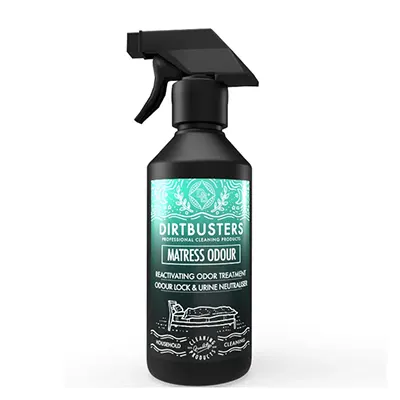
What sets this odour eliminator apart from some others you can find on the UK market is the unique formula which continuously reactivates to remove bad odours. In this way, odours are eliminated at the source, and this product continues to eradicate and deodorise the mattress even between cleaning sessions.
What is also very important about the Dirtbusters Mattress Odour Eliminator is that it has an “odour lock”, so once you neutralise an unwanted odour, it means that the odour cannot be reactivated. Admittedly, this might just be a gimmick but the spray still does wonders! It is very easy to use. Just spray it on the affected areas and within a few hours it should solve the problem.
Advantages
Disadvantages
Spread the word
FAQs on how to clean a mattress easily and effectively
Now let's move on to some frequently asked questions regarding mattress cleaning and keeping your bedroom spick and span!
There's only so much cleaning you can do before you have to just throw the mattress away. Generally speaking, after 5 years, you should start looking for any signs of wear and tear – like lumps, rips, discolouration etc.
Generally speaking, a mixture of mild detergent, baking soda, and water gets the job done more often than not. However, getting an enzyme cleaner for when you wash bedding products can be a good idea as they're specifically designed to tackle biological stains (like sweat, urine and blood).
Hydrogen peroxide is generally very efficient when it comes to taking out protein and plant-based stains. It's not necessary but can provide some extra kick if you're doing a deep clean and don't check up on your mattress regularly.
For most people, getting your mattress professionally cleaned isn't necessary. However, if you simply lack the time to do so yourself or have health issues that require the mattress to be completely spotless, getting a professional to do it might be the best option.
When it comes to steam cleaning a mattress, reading the care label is essential! This is because some mattress types (like memory foam mattresses) can be ruined with steam. However, sturdier models (like some spring mattresses) will not only hold up but will come out as clean as a whistle after the steam cleaning is done.
In terms of results, the best way to clean a mattress is to hire a professional to do it for you. In terms of keeping things simple, effective, and minimising risks of damaging the mattress – using lukewarm water, baking soda and mild dishwashing detergent and scrubbing the mattress down is your best bet.
Related products:
- Emma Mattress Protector Review
- Eve Temperature Balancing Mattress Protector Review
- Panda Bamboo Mattress Protector Review
Recommended reading:


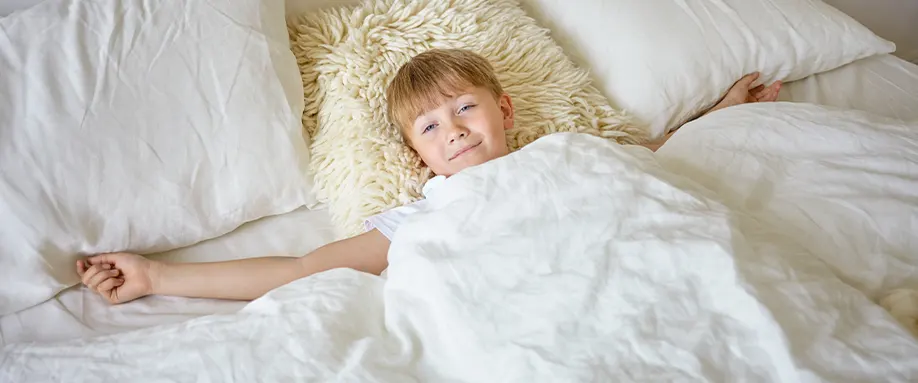
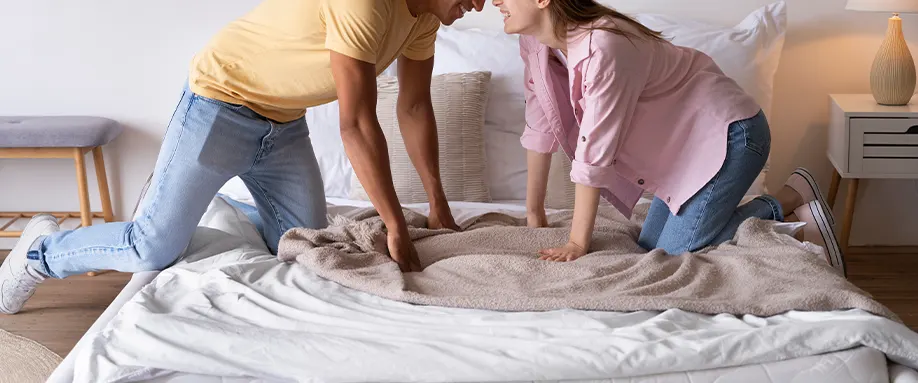











There are no comments yet
"*" indicates required fields